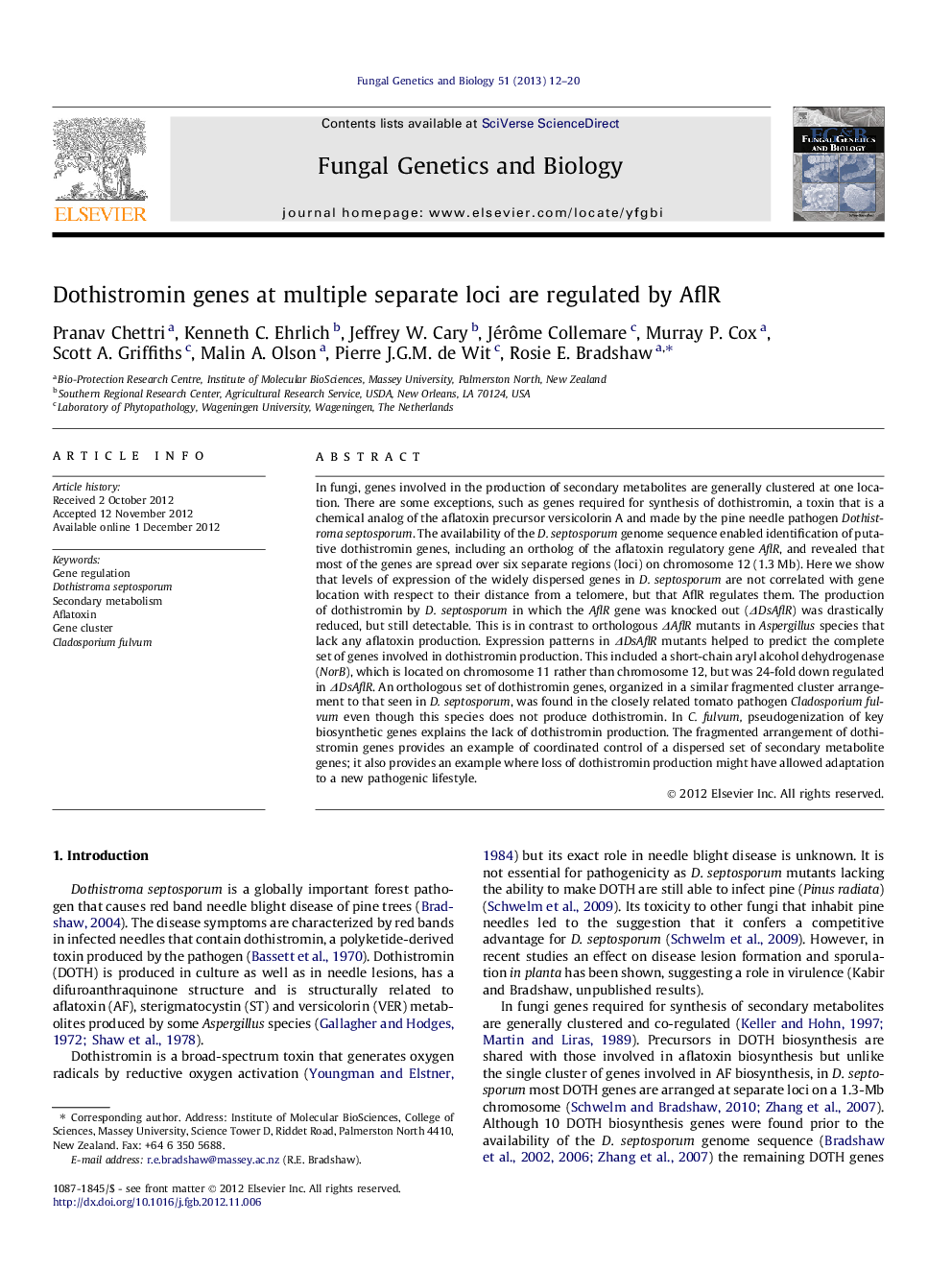| Article ID | Journal | Published Year | Pages | File Type |
|---|---|---|---|---|
| 2180882 | Fungal Genetics and Biology | 2013 | 9 Pages |
In fungi, genes involved in the production of secondary metabolites are generally clustered at one location. There are some exceptions, such as genes required for synthesis of dothistromin, a toxin that is a chemical analog of the aflatoxin precursor versicolorin A and made by the pine needle pathogen Dothistroma septosporum. The availability of the D. septosporum genome sequence enabled identification of putative dothistromin genes, including an ortholog of the aflatoxin regulatory gene AflR, and revealed that most of the genes are spread over six separate regions (loci) on chromosome 12 (1.3 Mb). Here we show that levels of expression of the widely dispersed genes in D. septosporum are not correlated with gene location with respect to their distance from a telomere, but that AflR regulates them. The production of dothistromin by D. septosporum in which the AflR gene was knocked out (ΔDsAflR) was drastically reduced, but still detectable. This is in contrast to orthologous ΔAflR mutants in Aspergillus species that lack any aflatoxin production. Expression patterns in ΔDsAflR mutants helped to predict the complete set of genes involved in dothistromin production. This included a short-chain aryl alcohol dehydrogenase (NorB), which is located on chromosome 11 rather than chromosome 12, but was 24-fold down regulated in ΔDsAflR. An orthologous set of dothistromin genes, organized in a similar fragmented cluster arrangement to that seen in D. septosporum, was found in the closely related tomato pathogen Cladosporium fulvum even though this species does not produce dothistromin. In C. fulvum, pseudogenization of key biosynthetic genes explains the lack of dothistromin production. The fragmented arrangement of dothistromin genes provides an example of coordinated control of a dispersed set of secondary metabolite genes; it also provides an example where loss of dothistromin production might have allowed adaptation to a new pathogenic lifestyle.
► Dothistromin toxin genes are not clustered but are regulated by AflR. ► Dothistromin gene expression levels are independent of telomeric location. ► Dothistroma septosporum AflR mutants produce low levels of dothistromin. ► We predict the complete set of dothistromin genes based on AflR regulation. ► Lack of dothistromin production in Cladosporium fulvum is due to pseudogenization.
